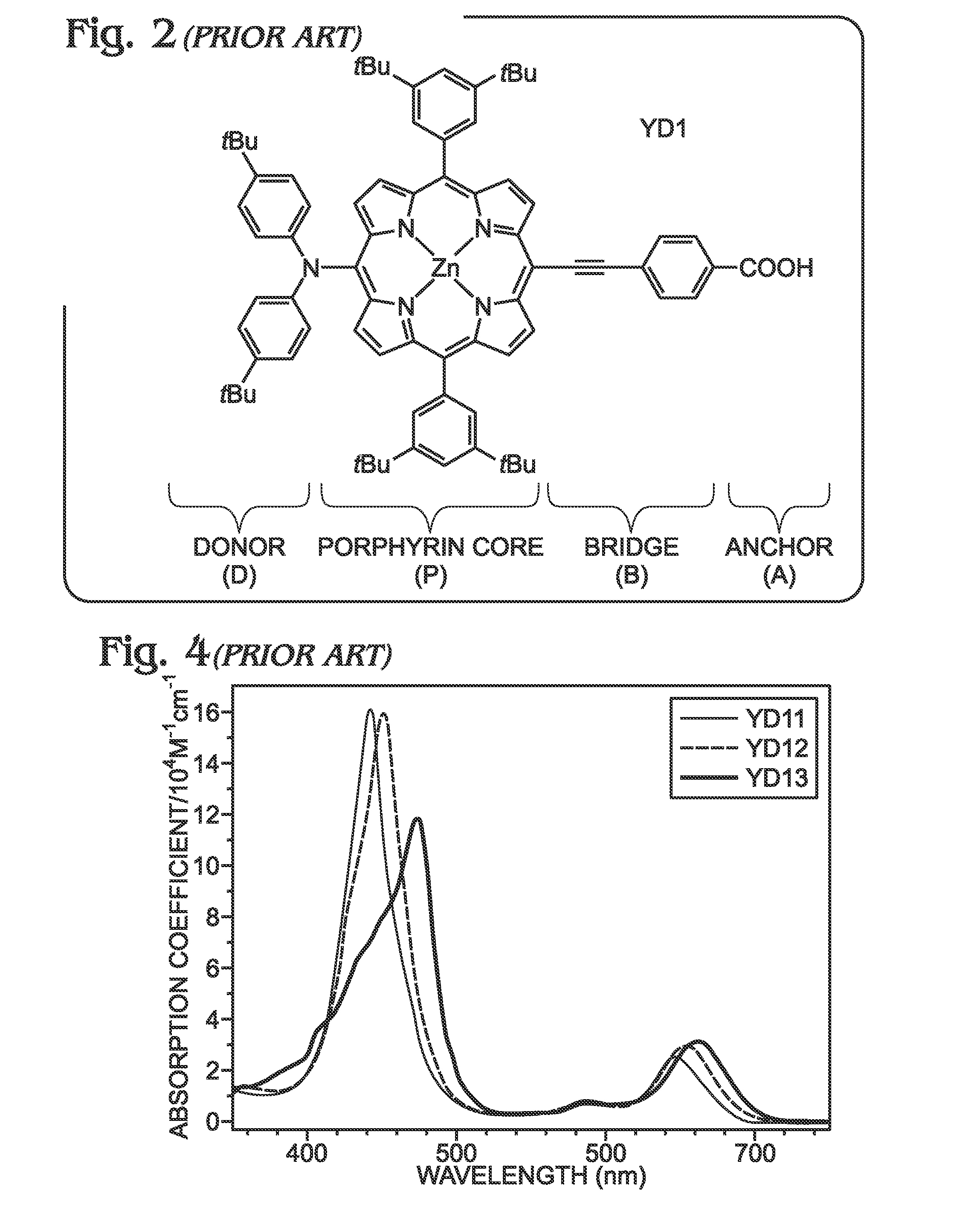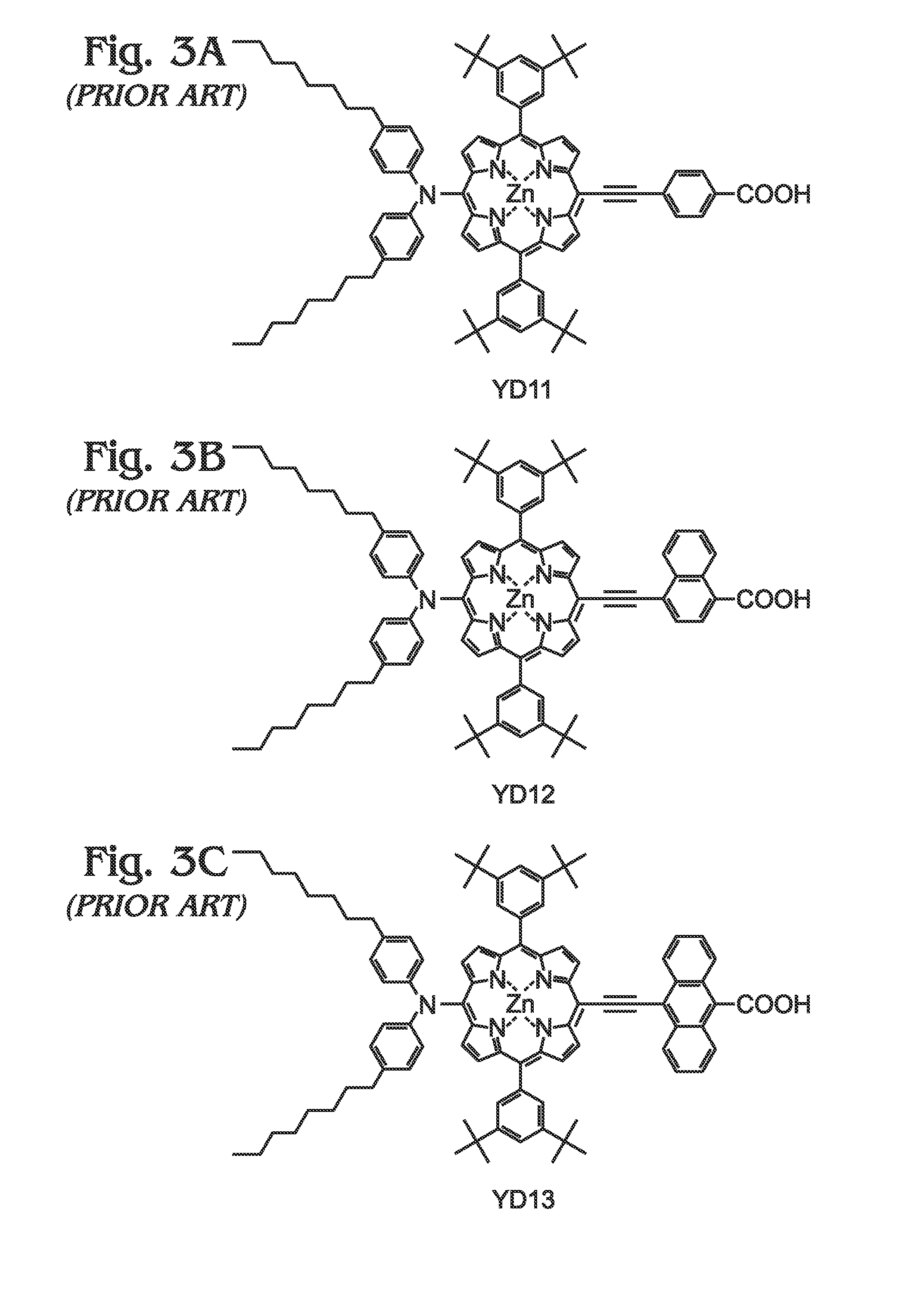Long wavelength absorbing porphyrin photosensitizers for dye-sensitized solar cells
a technology of porphyrin and solar cells, applied in the field of porphyrin molecule, can solve the problems of reducing the number of molecular photosensitizer units that can be employed, difficult synthesis of large-scale, highly-conjugated photosensitizers, etc., and achieves the effects of increasing the absorption of photosensitizers, reducing the number of molecular photosensitizer units, and effective harvesting long wavelengths of ligh
- Summary
- Abstract
- Description
- Claims
- Application Information
AI Technical Summary
Benefits of technology
Problems solved by technology
Method used
Image
Examples
Embodiment Construction
[0037]FIG. 7 is a diagram depicting a long wavelength absorbing porphyrin / metalloporphyrin molecule. The porphyrin / metalloporphyrin molecule 700 comprises a porphyrin macrocycle 702, and an anchor group 704 for attachment to a substrate. In one aspect, the porphyrin macrocycle 702 includes an “M” moiety such as H2 or a metal. A molecular linking element 706 is interposed between the porphyrin macrocycle 702 and the anchor group 704. The porphyrin / metalloporphyrin molecule 700 also comprises an (aminophenyl)amine group 708 that may be either N,N-(4-aminophenyl)amine 708a or N-phenyl-N-(4-aminophenyl)amine 708b, where the amino moiety of the 4-aminophenyl group is derivatized by an element such as hydrogen, alkanes, haloalkanes, aromatic hydrocarbons, halogenated aromatic hydrocarbons, heteroarenes, halogenated heteroarenes, or combinations of the above-mentioned elements. As used herein, the term “element” is not defined as only an element of the periodic table, but may also refer to...
PUM
| Property | Measurement | Unit |
|---|---|---|
| wavelengths | aaaaa | aaaaa |
| Voc | aaaaa | aaaaa |
| wavelengths | aaaaa | aaaaa |
Abstract
Description
Claims
Application Information
 Login to View More
Login to View More - R&D
- Intellectual Property
- Life Sciences
- Materials
- Tech Scout
- Unparalleled Data Quality
- Higher Quality Content
- 60% Fewer Hallucinations
Browse by: Latest US Patents, China's latest patents, Technical Efficacy Thesaurus, Application Domain, Technology Topic, Popular Technical Reports.
© 2025 PatSnap. All rights reserved.Legal|Privacy policy|Modern Slavery Act Transparency Statement|Sitemap|About US| Contact US: help@patsnap.com



